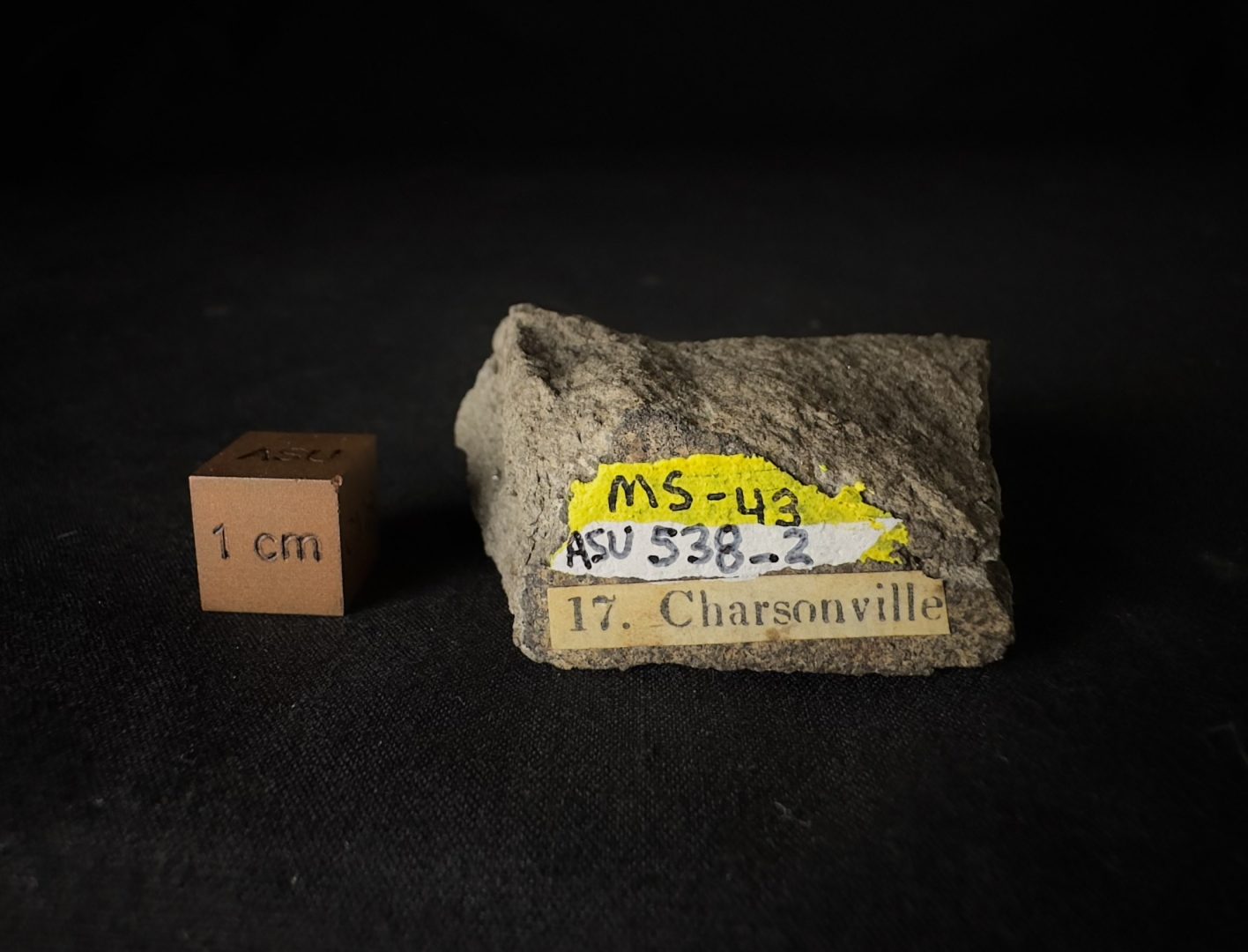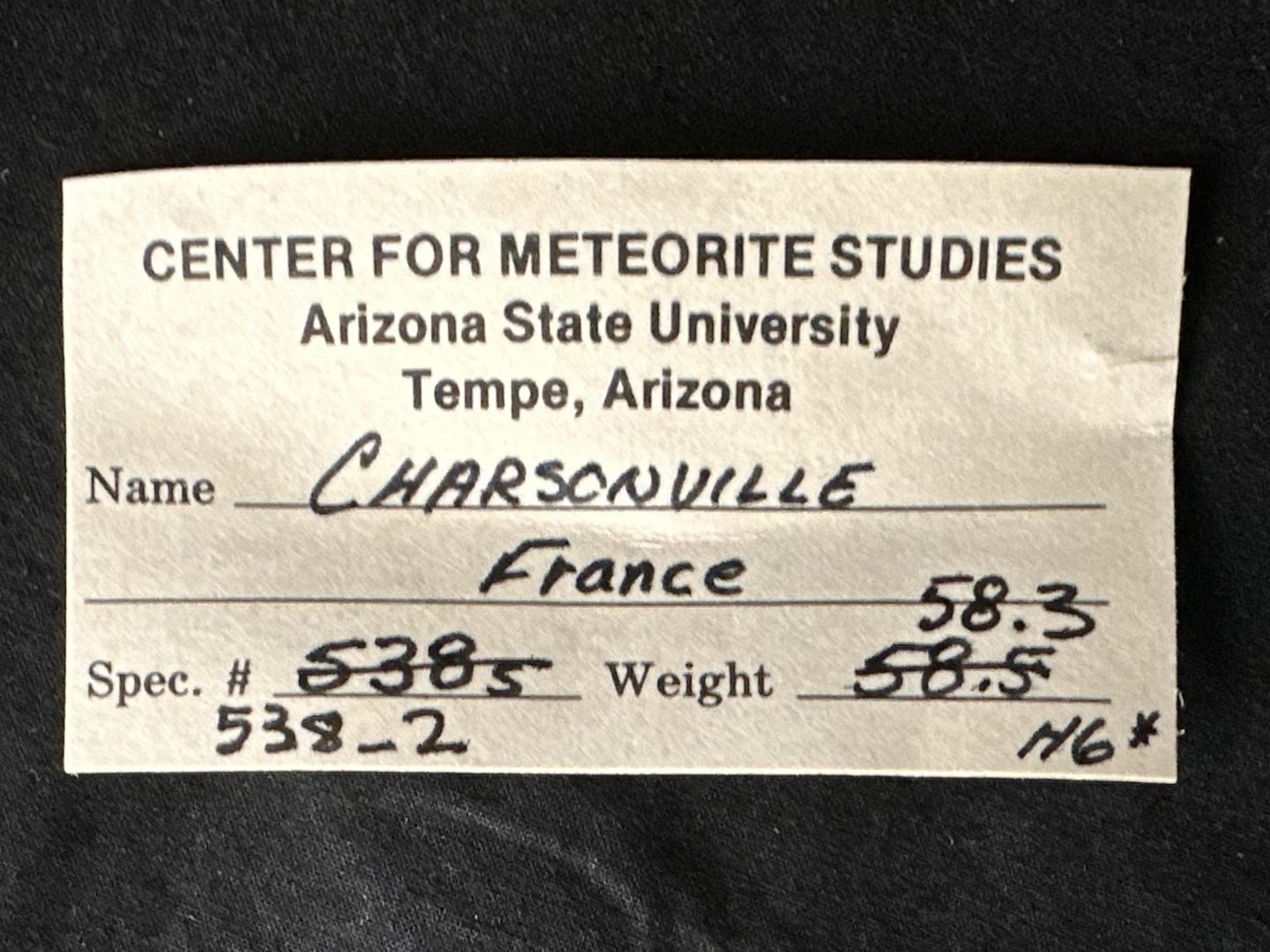Charsonville
November's Meteorite of the Month is Charsonville, an ordinary (H6) chondrite that fell in France, in 1810.
According to the Meteoritical Bulletin (MB online):
"On November 23, 1810, at 1:30 p.m, a meteor, coming from the north, burst over the town of Charsonville. A violent detonation then occurred, which was also heard from Orléans, Meung, Beaugency, and Blois. Two or three other detonations followed. and the sound phenomena thus lasted a few minutes. At least three stones were mentioned in the reports of the time: The first fell at Le Moulin-Brûlé (which is today a field located at the southern exit of Charsonville). The second was found at the Farm de Villerai (now Villeray). The third fell on the Farm de Mortelle. A sharecropper and his carter, leaving the farm, witnessed the fall. One of these stones weighed 10 kg, another 5 kg. In all, almost 27 kg were collected. The most probable trajectory of the meteor was from northwest to southeast (or north-south).
Another stone may have fallen in the Bois de Fontaine (or Boisfontaine), located two km west of Chateau de la Touanne. In 1886, J. R. Gregory, an American mineralogist, claimed to have received a few years earlier, fragments of the meteorite that fell in Bois de Fontaine, on the property of the Marquis de la Touane, near Meung, in the Loiret department, in 1825. The Bois de Fontaine specimen is now considered to be one of the stones of the fall of Charsonville in 1810."
Photos © ASU/BCMS.

